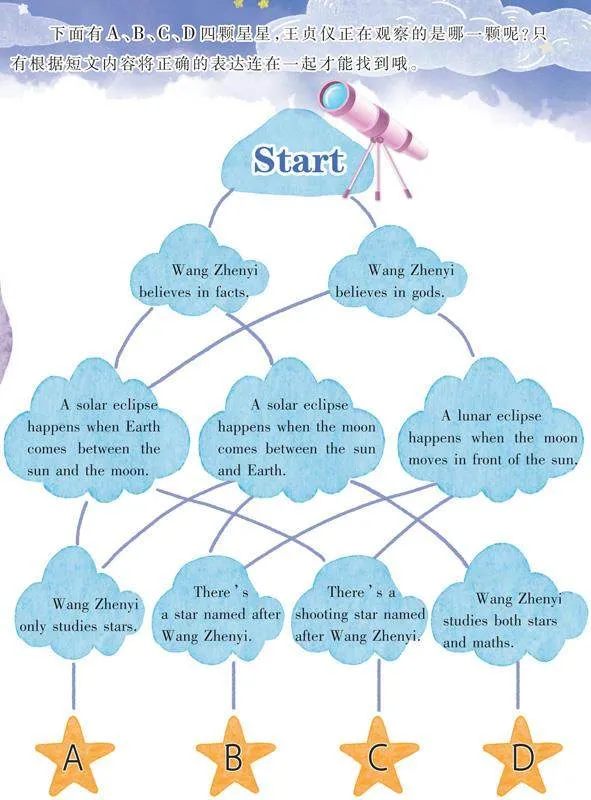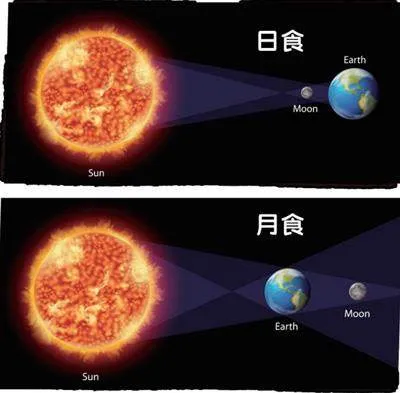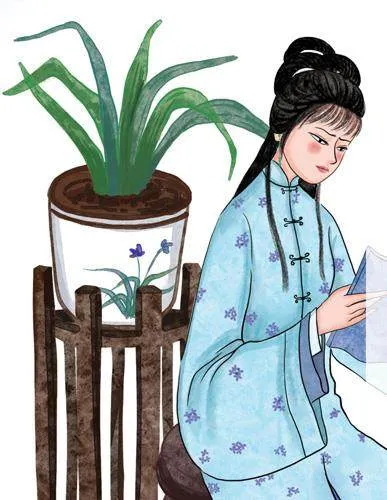The.cir who Watched the Stars 仰望星空的女孩



18世纪时,在江苏南京,有一位名叫王贞仪的“奇女子”。她痴迷于天文学,通过科学实验正确论述了日食、月食等天文现象。为了纪念她在天文学领域作出的贡献,1994年,国际天文学联合会用她的名字命名了金星上的一个陨石坑。在“中国航天日”到来之际,让我们走进古代中国女科学家王贞仪的故事,去听一听她如何抒写那“仰望星空”的传奇!
In ancient China, people believed that an eclipse(日食;月食) was a sign of gods’ anger(愤怒). As we know, there’s a well-known old Chinese story called Tiangou Ate the Moon(《天狗吃月亮》). But Wang Zhenyi didn’t think so. She believed in facts(事实) and always wanted to find out the truth behind the story.
Wang Zhenyi did experiments(实验) at home, using a round table, a lamp and a mirror. The table was Earth, the lamp was the sun, and the mirror was the moon. She moved them around to understand their motions(运动). Guess what she found out!
When the moon moves in front of the sun, it can cover the sun and make a solar eclipse(日食). When Earth comes between the sun and the moon, it blocks(阻碍) the sunlight from reaching the moon and make a lunar eclipse(月食).
Wang Zhenyi also did her best to explain some maths ideas in simple ways and made guides for the beginners(初学者).
Wang Zhenyi died at the age of 29, like a shooting star(流星). But the whole world remembers what she did for us. In 1994, the International Astronomical Union(国际天文学联合会) named a crater on Venus(金星上的陨石坑) after her. The girl who watched the stars has now become a shinning star in history.

